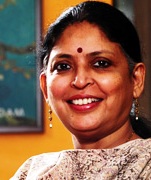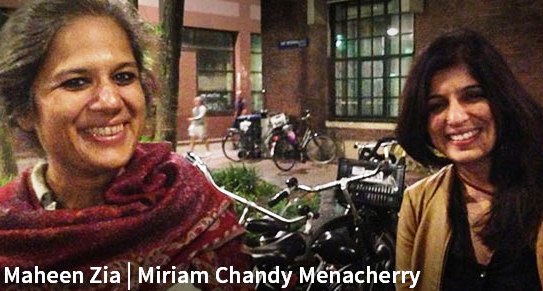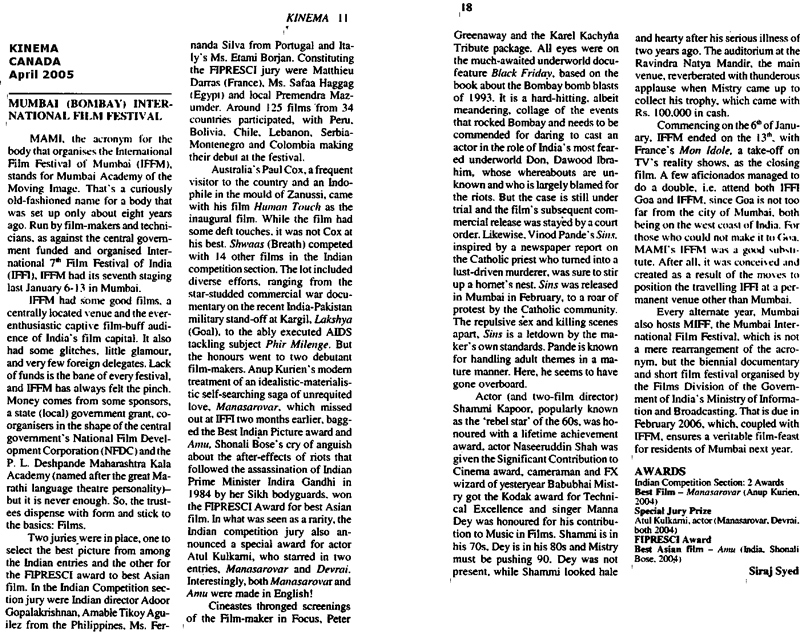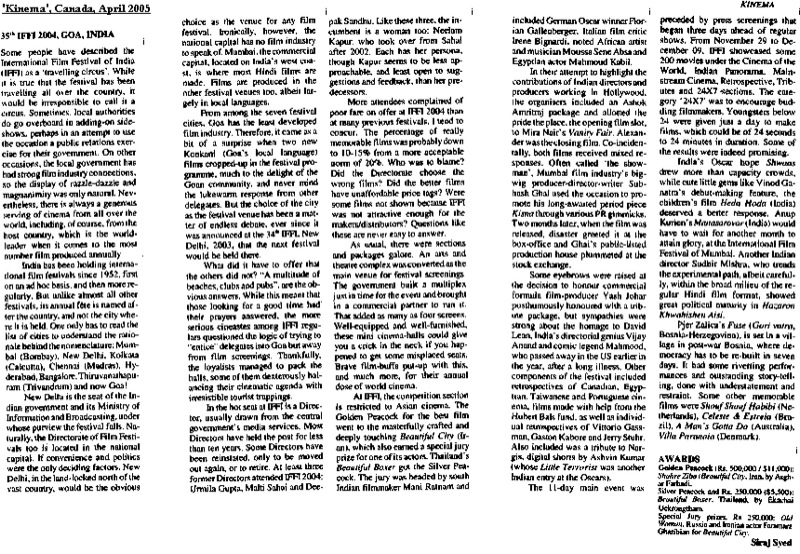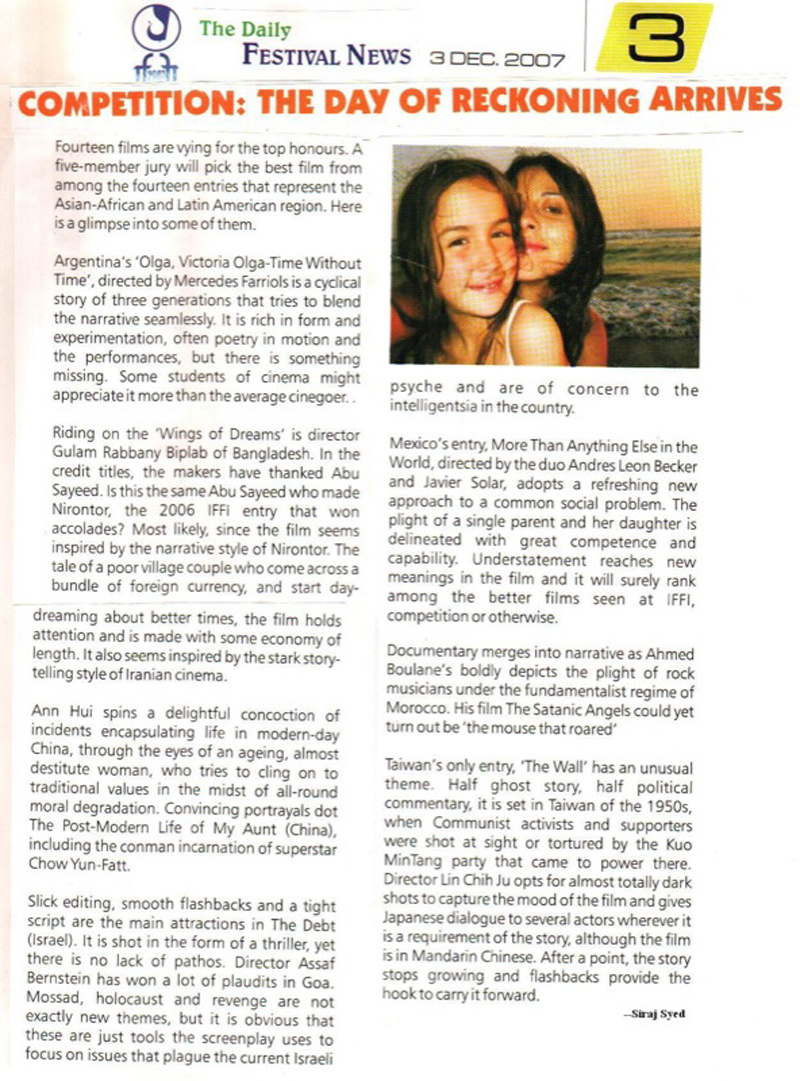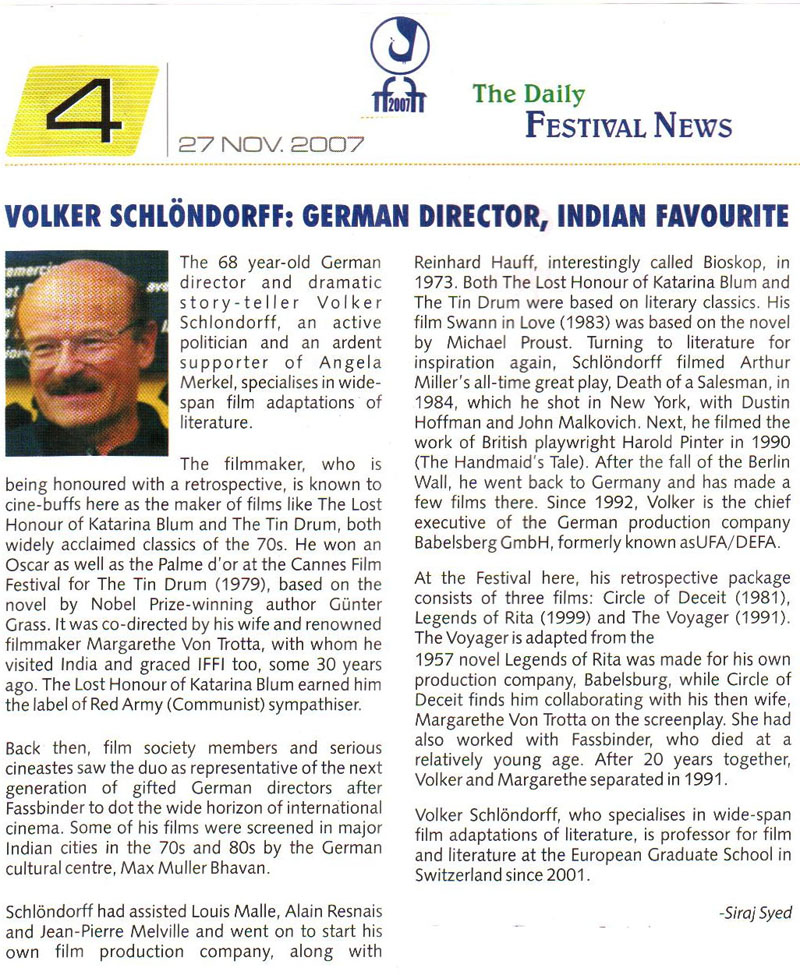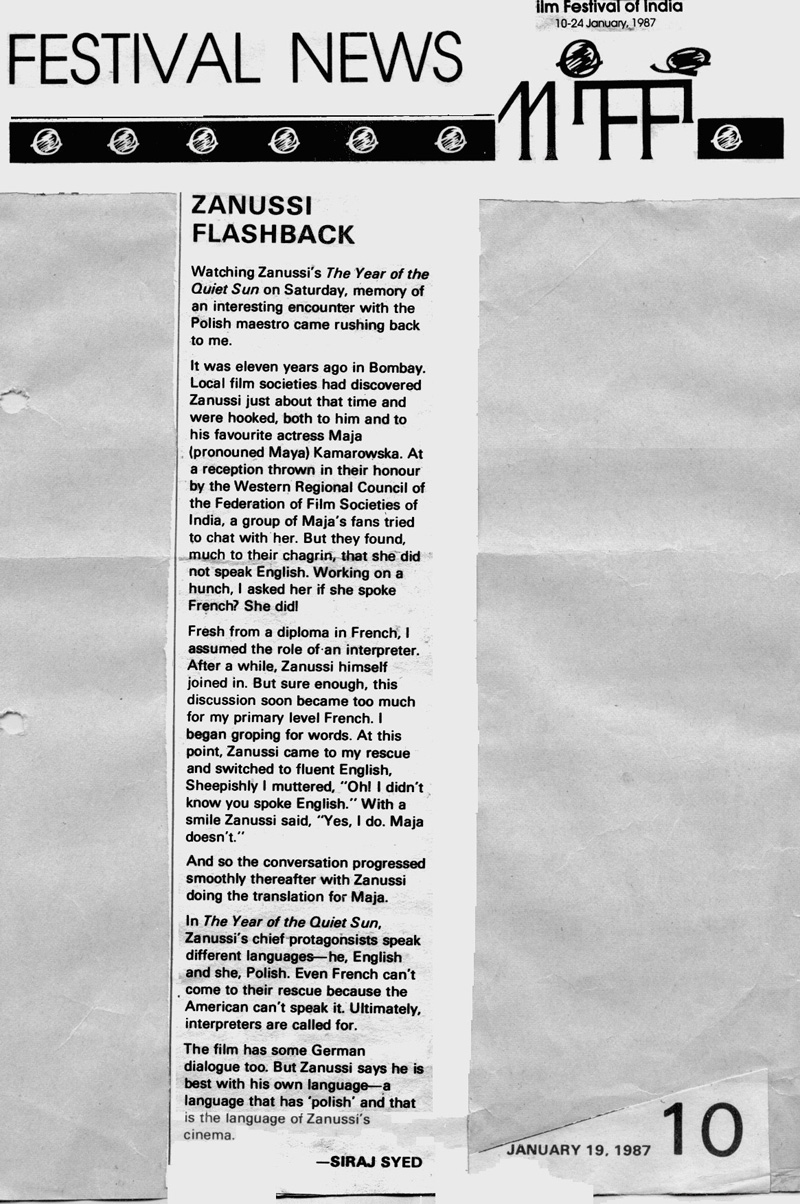|
|
||
|
Pro Tools
FILMFESTIVALS | 24/7 world wide coverageWelcome ! Enjoy the best of both worlds: Film & Festival News, exploring the best of the film festivals community. Launched in 1995, relentlessly connecting films to festivals, documenting and promoting festivals worldwide. Working on an upgrade soon. For collaboration, editorial contributions, or publicity, please send us an email here. User login |
MIFF: Open Forum III--Real documentaries, and faking it!
MIFF: Open Forum III--Real documentaries, and faking it! On the 31st of January, four passionate speakers and one moderator discussed another complex issue at the Mumbai International Film Festival’s Open Forum. Bina Paul, film editor and former Artistic Director of the International Film Festival of Kerala, had Miriam Chandy Menacherry and Audrius Stonys seated to her right, and Mamta Murthy and Sophy Sivaraman to her left. Facing the panel was an audience composed of Indian Documentary Producers’ Association (IDPA) members, veteran documentary-makers and some MIFF delegates. The topic of the day? ‘Market for documentaries, nationally/internationally: Will there continue to be a market for pure ground-reality based documentary films in the future, or are the boundaries between genres blurring too fast because of social media, sponsorship and other market considerations’.
At the very outset, Paul expressed an opinion that, “Creator, not the market, is the driving force. The opening of art space is an interesting development. In this reality, is there such a thing as a pure documentary anymore?” She then brought in MIFF jury member Stonys, who has made 20 films as an independent film-maker and producer, and tutors at DocEdge, Kolkata. Stonys reminisced about the era when documentaries were made in 35 mm, and when digital came, he was very dismissive about it. Now, he said, “I take back my words. Today’s mobile cameras give a quality that is better than the regular cameras of five years ago. So, quality is not an issue. What is important is to reach the truth. One real tear shed in a documentary moves you so much, whereas it would require a murder or a massacre in a feature film to create the same impact.”
Mamta Murthy (photographer, film-maker (Colours Black, Fried Fish, Chicken Soup and a Premiere Show) felt that all burring is good. She remembered her experience of making Fried Fish, Chicken Soup and a Premiere Show, a film on the cinema of Manipur. “It was very difficult to get the Maipuris to talk about oppression and insurgency, so I decided to use their own cinema as an ally. While my film is linear, the clips go in reverse order, latest ones first. It was so touching when a man opened his attic for me and found films that his late father had left there. The son had not opened the attic ever since.”
To broadcast journalist turned film-maker Menacherry (The Rat Race, Lyari Notes), every film is a challenge. “Two film-makers whose work has really impressed me are Leni Riefenstahl and Errol Morris.” Riefenstahl, who died in 2003, aged 101, made war propaganda films for Germany, while Morris is an acclaimed American director who made a fictional film about a real murder, called The Thin Blue Line (1988), identifying the likely killer, which eventually led to the acquittal of a convict who was on death row. “My own film Lyari Notes (co-directed by Maheen Zia of Pakistan) is about girls in Karachi who go to music school, and was triggered by Pakistani music underground music videos that were full of political satire. So, was I going to be in trouble, considering the soured neighborly relations between our two countries?”
Picking up from there, Sivaraman (editor-director, Executive Director at Indian Documentary Foundation) wondered whether an internationally acclaimed film like Act of Killing (Joshua Oppenheimer) could be called a pure documentary. It is about real incidents, but the incidents are faked, or recreated, using actors. “One good thing about it is that after seeing the film, the concerned and affected persons came to terms with their past.” Two other concerns were expressed vociferously: the strong and urgent need for newspapers and magazines to review documentaries on a regular basis, just as they review feature films and books, and the responsibility on every documentary-maker to avoid the trappings of motivated, untruthful or acted-out documentaries. 05.02.2016 | Siraj Syed's blog Cat. : Ambiance
|
LinksThe Bulletin Board > The Bulletin Board Blog Following News Interview with IFTA Chairman (AFM)
Interview with Cannes Marche du Film Director
Filmfestivals.com dailies live coverage from > Live from India
Useful links for the indies: > Big files transfer
+ SUBSCRIBE to the weekly Newsletter Deals+ Special offers and discounts from filmfestivals.com Selected fun offers
> Bonus Casino
User imagesAbout Siraj Syed Syed Siraj Syed Siraj (Siraj Associates) Siraj Syed is a film-critic since 1970 and a Former President of the Freelance Film Journalists' Combine of India.He is the India Correspondent of FilmFestivals.com and a member of FIPRESCI, the international Federation of Film Critics, Munich, GermanySiraj Syed has contributed over 1,015 articles on cinema, international film festivals, conventions, exhibitions, etc., most recently, at IFFI (Goa), MIFF (Mumbai), MFF/MAMI (Mumbai) and CommunicAsia (Singapore). He often edits film festival daily bulletins.He is also an actor and a dubbing artiste. Further, he has been teaching media, acting and dubbing at over 30 institutes in India and Singapore, since 1984.View my profile Send me a message The EditorUser contributions |

















